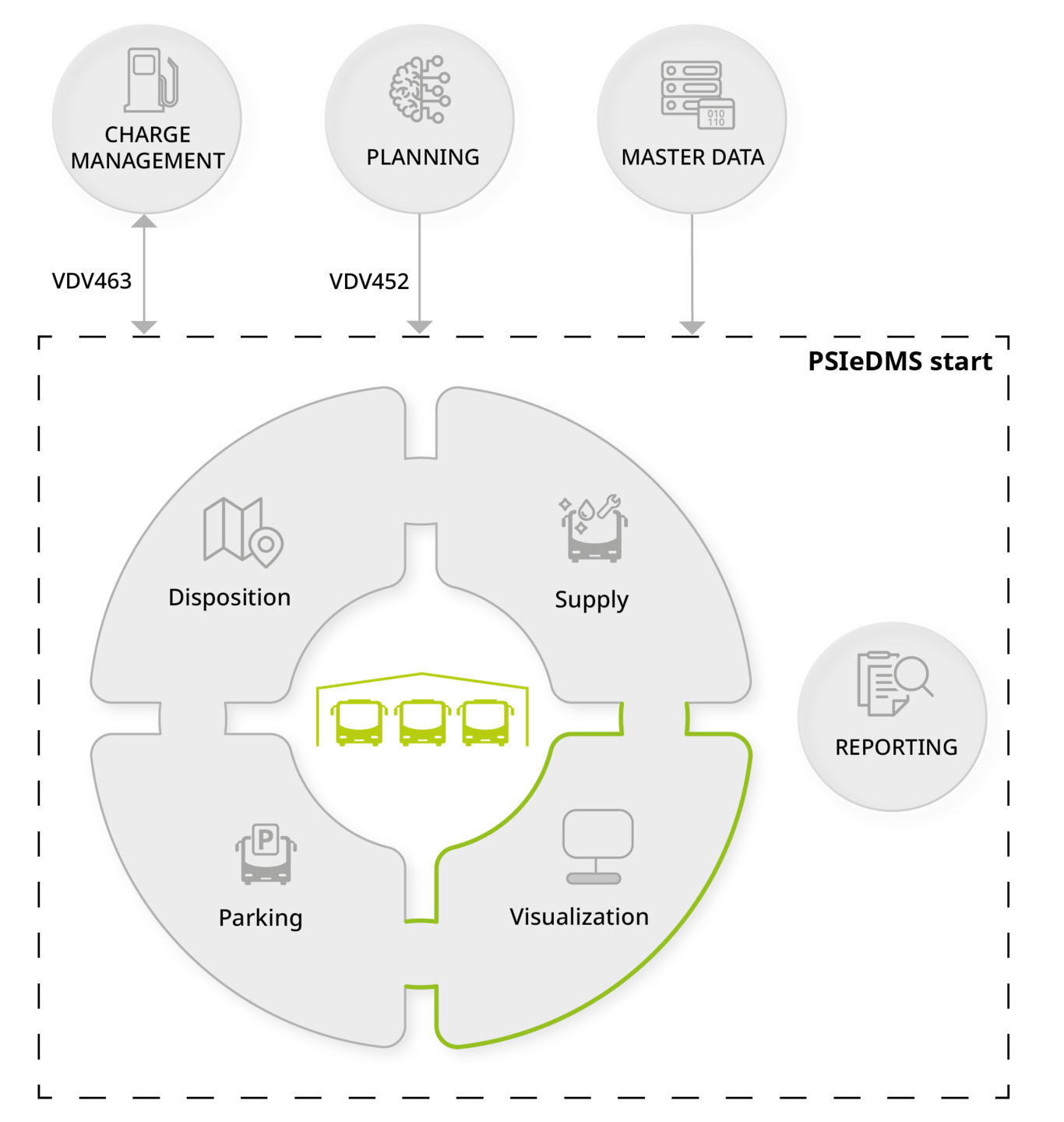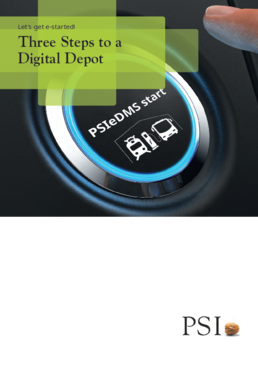Word has long since got around about how much transport companies benefit from a depot management system. At the same time, many managers are put off by the time it takes to introduce such complex software solutions. A basic system that can be put into operation in a short time using standardised processes offers an alternative.
Classic depot or depot management systems (DMS) are designed to digitise and automate processes to a high degree. This results in many advantages for day-to-day operations. On the other hand, this also results in a high level of system complexity, which is further increased by the introduction of new drive types.
Companies are now required to operate conventional and emission-free vehicles in parallel. Introducing a modern DMS in its maximum form is therefore challenging and ranges from
- the system requirements phase,
- specifications and functional specifications
- time-consuming workshops through to
- expensive adjustments during system implementation.
This is precisely why many companies put their digitalisation plans on the back burner. In addition, they simply lack the necessary resources and capacities to successfully manage IT projects of this dimension alongside their day-to-day business.
The Focus Is on the Digitalisation of Core Processes
Such a turnkey realisation corresponds to the product scope of the PSIeDMS start software from PSI Transcom. The system includes all functionalities required for the efficient management of vehicles of all drive types.

The Basic PSIeDMS System Comprises 4 Modules That Are Covered:
- Visualisation
- Supply
- Disposition
- Stabling
This also includes the connection to a loading management system (VDV463) and upstream timetable systems (VDV452) as well as the option to import master data and generate reports. This reduced complexity in the basic system means that the solution can be implemented quickly.
Introducing the system using a standardised process is another key component. It ensures that transport companies can quickly benefit from the advantages of the system once it has been installed.
At the same time, they have all the options they need to expand their depot management system gradually and in line with their individual requirements. Upgrades can be used to integrate additional modules, automate processes or maximise the degree of automation of workflows. In the final expansion stage, the system can then work completely autonomously - without the intervention of a dispatcher.
Practical Use Cases
- Digitise and visualise depot
- Standardised digital view in real time for multiple workstations
- Manage vehicle supply and malfunctions
- Display vehicle statuses in real time
- Visualise and monitor charging processes
- Precondition e-vehicles (VDV 463)
- Schedule rotations for vehicles (via drag-and-drop and release lists)
- Dispatch vehicles to parking bays (via drag-and-drop)
- Archive battery status data
- Roll out additional depots independently
Commissioning in a Few Weeks
On the one hand, the standardised system implementation guarantees commissioning in just a few weeks and, on the other, enables the companies to achieve the greatest possible independence. PSI is on hand to provide advice both during system implementation and during subsequent operation.

After a preparatory phase in which the companies create all the system requirements (i.e. check the quality of the data and existing interfaces), they order the software and the necessary licences. At the end of this ordering phase, they receive the preconfigured software.
The actual system implementation then follows in three consecutive steps:
- Deploying the system
In the first step, the software is installed jointly by a PSI expert. In order to be able to set up the IT environment and workstations independently, those responsible receive customised training. The same applies to the connection of databases and interfaces as well as the configuration of the depot operating screen.
- Customising the system
In the second step, the company customises the system and, among other things, sets up the user administration, imports the master data for operations, configures the driver departure board and checks and tests the range of functions and interfaces.
- Commissioning
In the third step, the system is put into operation.
Turnkey Realisation on the Basis of Standards
Product rollout instead of project implementation: this is a simplified description of the difference between the implementation of a complete solution with maximum automation and the introduction of the basic DMS system.
The basis of this turnkey realisation is, on the one hand, the coordination of the system with the basic, industry-typical requirements of transport companies and, on the other hand, the process and IT analysis carried out by PSI in advance. A short implementation time is also achieved thanks to the standardised range of functions, the preconfigured software and the standard implementation process.

![[Translate to English:] Quelle: AdobeStock/bht2000 (bearbeitet durch PSI)](/fileadmin/images/de/trends/Start_Button.jpg)
